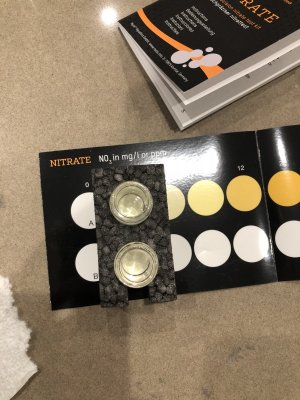- Joined
- Jun 16, 2019
- Messages
- 272
- Reaction score
- 117
If you haven't already bought bac and ammonia it's not needed, life rock cycling on page one shows it only needs water we have two full examples there. Adding any bac won't suppress or stop them it's just a mix of bac that balances out over time
B
Thanks for the reply, really appreciate all the info.
so if you don’t mind me asking, would you recommend that I don’t add any additional bacteria or ammonia (just leave life rock by itself) or should I add ammonia to fuel the cycle later this evening?
I was planning on adding liquid ammonia up to ~1ppm (based on dr Tim’s drops per gallon guide, not testing), but if I understand you correctly, the life rock by itself should cycle in 30 days?
Do you think it would hurt to add in ammonia? I just feel like the bacteria would starve out without any food source?
thanks again for all the help!





















